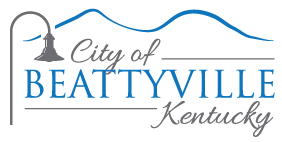Located in Eastern Kentucky along the Mountain Parkway Trails Corridor, Lee County has an area of 211 square miles, a population of 7,786, and was formed on March 1, 1870 with Proctor as the county seat, from portions of Breathitt, Estill, Owsley, and Wolfe counties. In 1872 the county seat was moved to Beattyville. Most sources say the county was named after Robert E. Lee, but others claim Lee County, Virginia, to which many of the county’s inhabitants trace their roots.
The topography of Lee County is hilly to mountainous creating a bicyclist’s and motorcyclist’s dream with 450 miles of country roads winding along ridges with panoramic views and through forested valleys which have remained virtually unchanged since Dr. Thomas Walker trod them in 1750. Also, newly discovered cliff and rock formations, similar to nearby Red River Gorge and Natural Bridge state park, have begun attracting free climbers from around the world. There are also near-primordial woodland settings found in the Daniel Boone National Forest which encompasses more than 7,000 acres of the western portion of the county. This broad range of natural settings, access to the Sheltowee Trace and rural culture makes the area ideal for camping and hiking.
The Kentucky River valley, fed by 60 creeks, splits the county on its winding Northwesterly course and provides fertile, productive farmland making the family farm a staple of the community raising Livestock; beef cattle, goats, chickens, horses, sheep and llamas, and vegetables; tomatoes, peppers, gourds, pumpkins, cabbage, lettuce, carrots, melons, potatoes and squash. The hills and valleys are heavily forested with large commercial stands of Oak, Beech, Black Walnut, Buckeye, Yellow Poplar, and Pine, which support a small but robust forestry industry.
Wildlife is abundant with flocks of wild turkey and herds of deer common sites even during hunting season. Quail and Grouse still range through the meadows and forests along with gray and red squirrels, rabbits, foxes, doves, and even black bears, bobcats and coyotes have found their way back into the county. Hawks, eagles, falcons, and vultures glide effortless through the sky and at night owls call in the forest. Streams, rivers and countless farm ponds are home to numerous pan fish, bass, catfish, walleye and muskellunge.
Numerous festivals scheduled throughout the year, the most well known being the Woolly Worm Festival, celebrate the local culture, artists and crafters. There are active artists who practice woodworking, textile art, painting, sculpting, basket weaving, and ceramics. With seven historic sites listed in the National Register of Historic Places, and a local museum, there is a deep connection to the history of the area.
Since 2006, city and county leaders and residents embarked on a plan to expand tourism opportunities in the area. This resulted in a growth of lodging and restaurants along with upgrades to internet accessibility, sewage treatment facilities, water treatment plants, and roads. State of the art baseball and softball fields, a 300 seat outdoor amphitheatre and a complete renovation of Beattyville’s main street are all projects to make Beattyville a terminal stop for tourists.
For more information, please visit our tourism website heartofthekentuckyriver.com.
